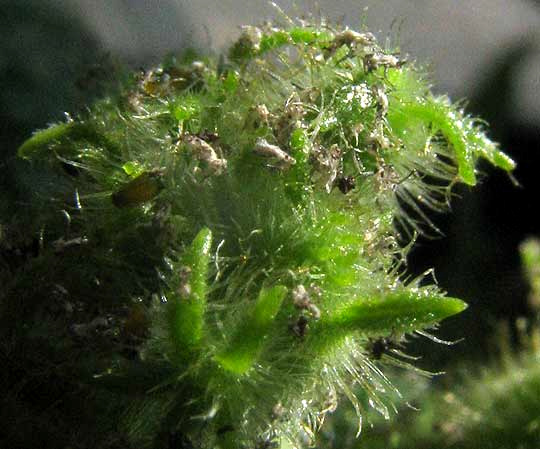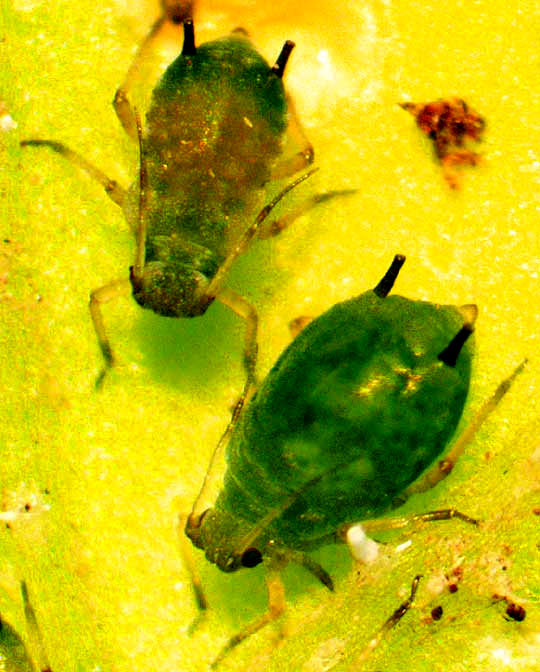Excerpts from Jim Conrad's
Naturalist Newsletter
from the November 25, 2012 Newsletter issued from the valley of the Dry Frio River in northern Uvalde County, southwestern Texas, on the southern border of the Edwards Plateau; elevation ~1750m (~5750 ft); N29.62°, W99.86°; USA
APHIDS ON CUCUMBER VINES
The other day the cucumber vines' fuzzy, rapidly growing stem tips acquired a certain silvery, flaky messiness, as you can see below.

Gardeners recognize that here the stem tip is covered with the discarded exoskeletons of aphids. As insects grow, periodically they split from their exterior skeletons, or exoskeletons, abruptly expand in size, and once their new exoskeletons have hardened enough they move on, abandoning their old exoskeletons in places like our cucumber vines' stem tips.
It was easy to find living aphids busily sucking juices from the cucumber vines' leaf undersurfaces. I tore off a leaf and looked at my unwelcome guests below the dissecting scope. You can see a couple below:

Best I can determine, these are Melon Aphids, sometimes called Cotton Aphids, APHIS GOSSYPII, in which larger, dark-green individuals such as the one in the photo habitually occur, and for which cucumber vines are listed as important foods. Many species of aphids are known, and mostly they infest just one or a few kinds of plants.
I couldn't find winged individuals on these vines, and that might be because we're so far south. In the north -- north of Arkansas, approximately -- female Melon Aphids typically hatch in the spring from eggs on the primary plant host. They feed, mature, and reproduce asexually, or parthenogenetically, on this host all summer, or else they might produce winged females who fly off to a secondary host to form new colonies, where both winged and wingless female offspring are produced. Under warm conditions, a generation can be completed parthenogenetically in about a week. Late in the season, winged females return to the primary host, and then as the season ends both males and egg-laying females are produced. They mate and females deposit eggs that overwinter.
Here farther south, sexual forms may not form at all during the year. Females continue producing offspring without mating for as long as weather allows feeding and growth. Among the many aphid species, one feature distinguishing Melon Aphids is that hot weather doesn't bother them.
So, maybe I'm not seeing winged individuals because our Melon Aphids are just producing one quick generation after another of wingless females. No males are needed for this simple strategy, and where crops are produced year round in one place, no wings, either.